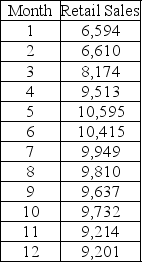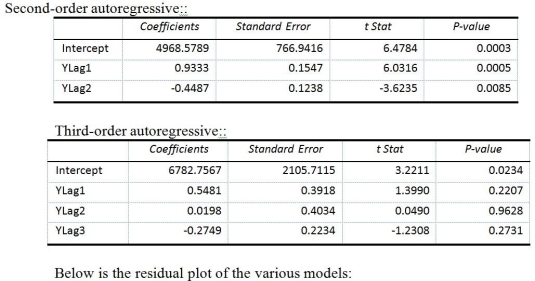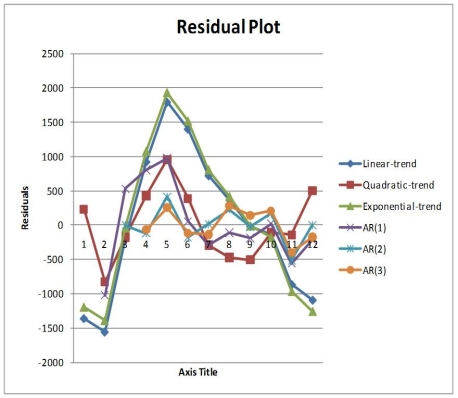TABLE 16-13
Given below is the monthly time-series data for U.S. retail sales of building materials over a specific year.

The results of the linear trend, quadratic trend, exponential trend, first-order autoregressive, second-order autoregressive and third-order autoregressive model are presented below in which the coded month for the first month is 0:




-Referring to Table 16-13, you can conclude that the quadratic term in the quadratic-trend model is statistically significant at the 5% level of significance.
Definitions:
Self-report Personality Tests
Psychological tests in which individuals answer questions about themselves to assess personality traits and characteristics.
Personality Traits
Persistent traits that depict a person's conduct.
Ambiguous Stimuli
Information or images that can be interpreted in multiple ways or lack clear definition, often used in psychological tests to explore perception, thought processes, and unconscious motivations.
Social Desirability
The tendency of respondents to answer questions in a manner that will be viewed favorably by others, often leading to bias in survey responses.
Q15: Referring to Table 17-9,an R chart is
Q84: Referring to Table 14-15,the alternative hypothesis H₁:
Q95: Referring to Table 16-12,to obtain a forecast
Q116: Referring to Table 16-4,exponential smoothing with a
Q117: Referring to Table 16-13,what is the exponentially
Q122: Referring to Table 14-10,the adjusted r² is
Q146: Referring to Table 14-14,the fitted model for
Q206: Referring to Table 14-10,to test the significance
Q240: Referring to Table 7-1,80% of all the
Q353: Referring to Table 14-15,there is sufficient evidence